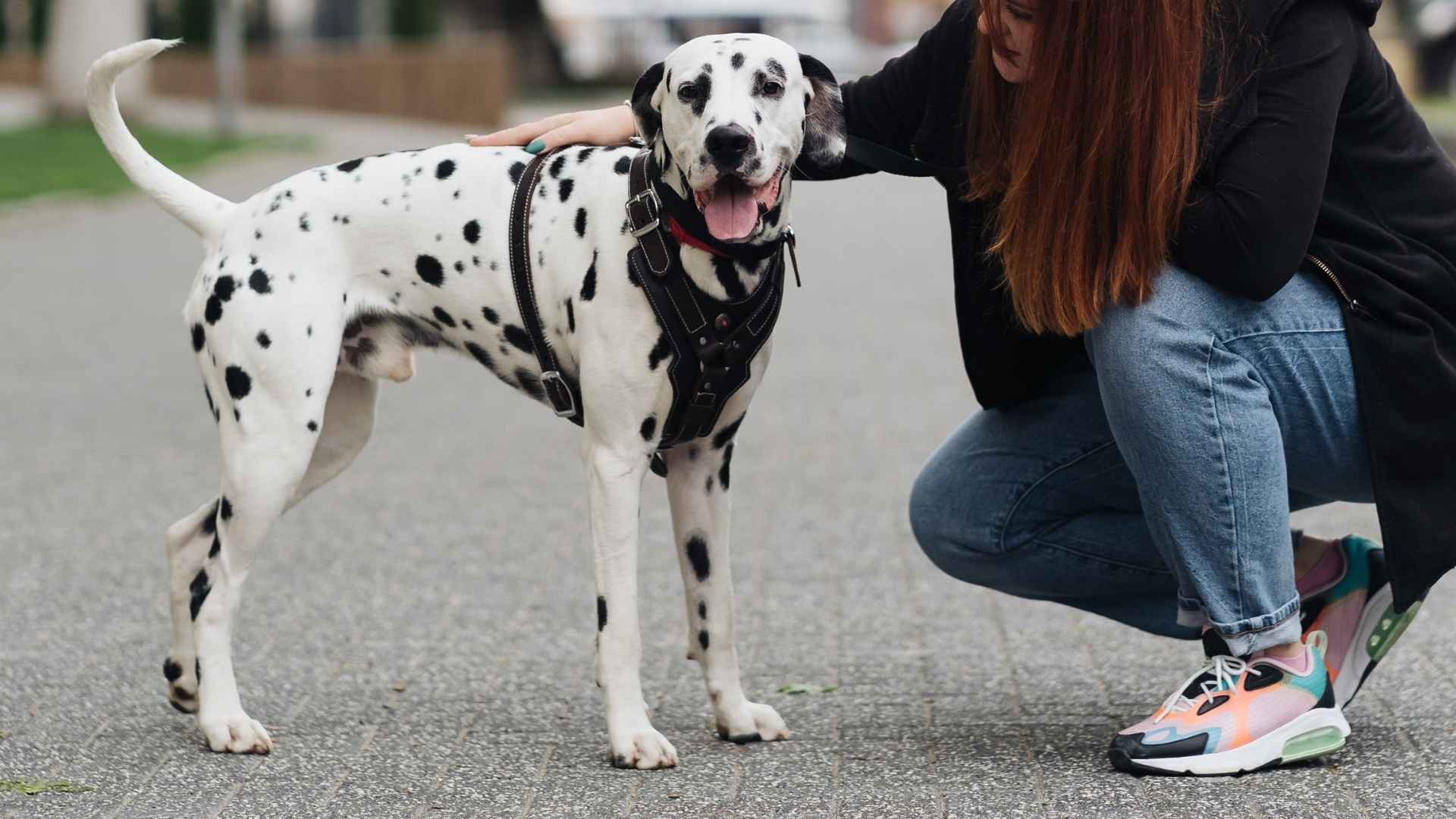Did you know that some dogs are born with a natural ability to stay calm and composed around unfamiliar faces? While most dogs thrive on attention and affection from new people, certain breeds are naturally more independent, observing rather than immediately jumping into social interactions. This unique trait can make them excellent companions for owners who appreciate a more laid-back, confident dog.
Whether it’s a casual stroll through the park or hosting a dinner party, these dogs are often content to observe, remaining composed without feeling the need to seek out affection from every new face they meet. If you’re someone who values independence in a dog, especially when it comes to strangers, then you’re in the right place.
In this blog, we’ll explore the top independent breeds around strangers that offer both loyalty and a sense of self-reliance in social situations.
Independent Around Strangers Dog Breeds
1. Chow Chow
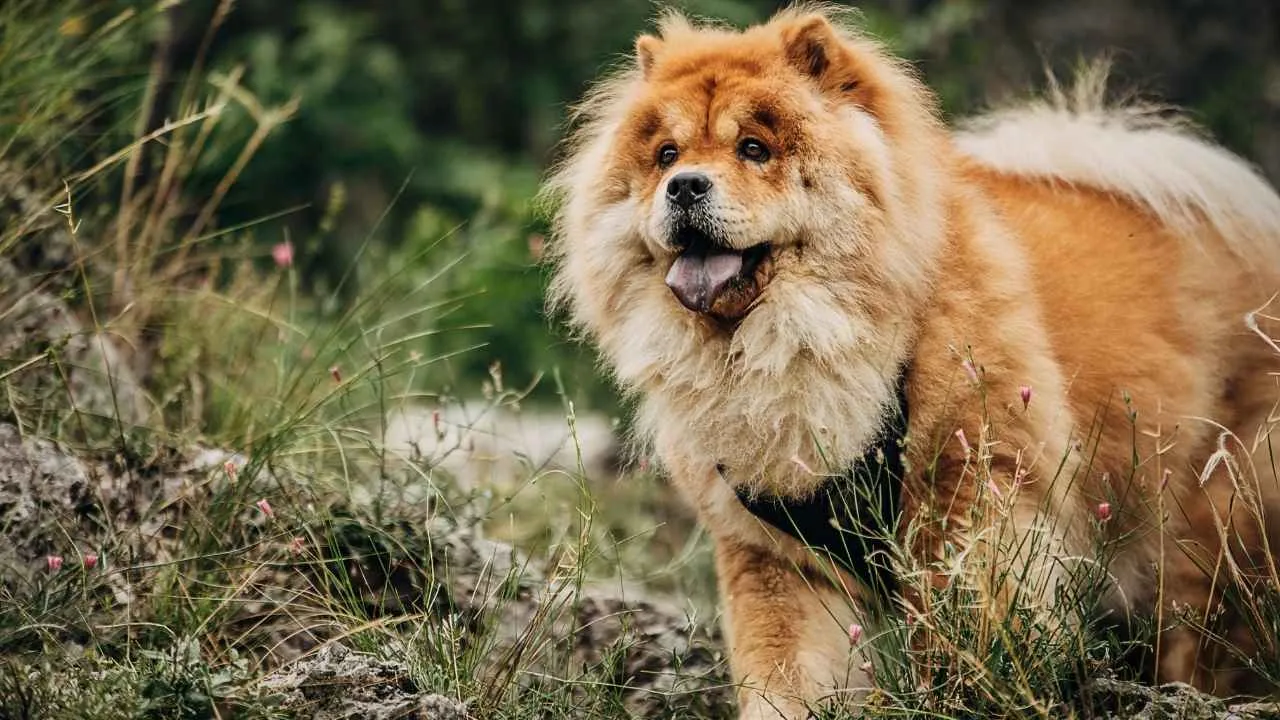
The Chow Chow, an ancient Chinese breed, is known for its lionlike mane, blue-black tongue, and stiff-legged gait. Originating in the Han dynasty (206 BCE–220 CE), the breed shares genetic traits with wolves.
The name “Chow Chow” may derive from a term for miscellaneous items or a Chinese condiment, and historically, it was also considered a food source. Though eating dog meat is now illegal in China, the breed was originally used for hunting, guarding, and as food.

Petplan states Chow Chows are independent, low-energy dogs that are aloof with strangers and can be aggressive without proper training. They form strong bonds with their owners and are loyal, though not overly affectionate. Their reserved nature makes them excellent watchdogs.
Early socialization and consistent, positive, gentle training are essential, as their independent spirit can be difficult for novice owners.
Known for their cleanliness and minimal odour, Chow Chows have coats in colours like red, black, blue, cinnamon, and cream. Their dignified demeanour and deep-set eyes enhance their aristocratic appearance. Chows are adaptable to city life, requiring minimal exercise.
Historically, Chow Chows served as guard dogs and food sources in ancient China. They were introduced to Britain in the 18th century, gaining popularity after being recognized by the American Kennel Club in 1903. Today, they are primarily companion dogs, admired for their majestic and dignified presence.
2. Chinese Shar-Pei
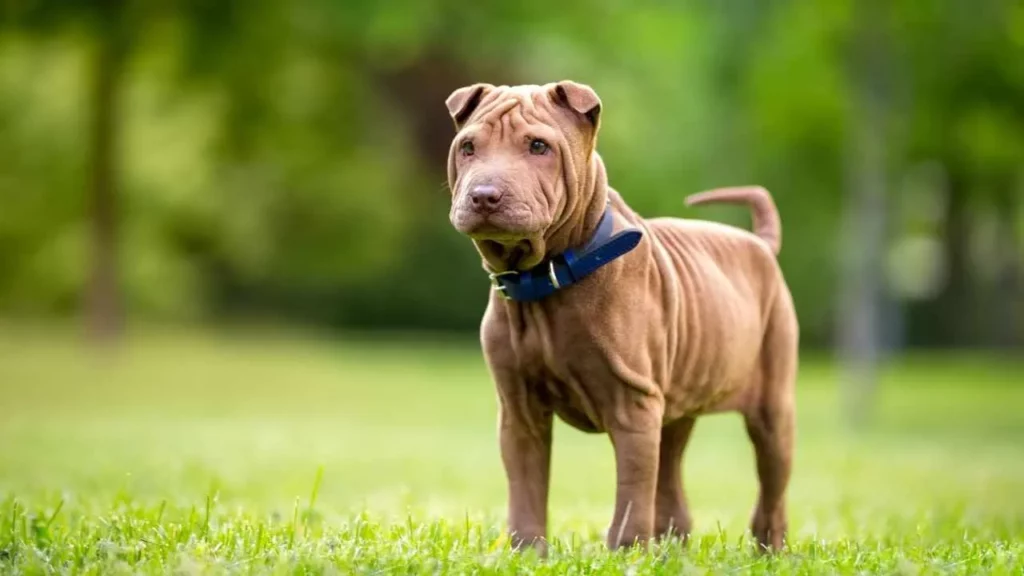
The Chinese Shar-Pei is a medium-sized breed known for its loose, wrinkled skin and distinctive blue-black tongue, which it shares with the Chow Chow. Originating in ancient China around 200 B.C., the breed was initially bred and used to guard royal palaces.
Its loose skin was designed to protect the dog in combat, as it allowed them to escape unharmed if another dog grabbed its skin. The Shar-Pei’s rough, sandy coat, which gives it the name “Shar-Pei” (meaning “sand-skin” in Chinese), is another defining feature.
Once among the world’s rarest breeds, the Shar-Pei nearly went extinct in mid-20th–century China due to a heavy dog tax. Its revival began after breeder Matgo Law appealed for help, and a 1979 Life Magazine article sparked U.S. interest.
Shar-Peis are aloof with strangers but affectionate with their families. Their independent, strong-willed nature suits experienced dog owners, and early socialization is vital to help them adapt to new people and environments.
With a moderate to high prey drive rooted in their herding and hunting past, they should be leashed or kept in secure areas outdoors. Though not high-energy, they benefit from daily short walks or around 30 minutes of exercise like agility.
Shar-Peis can be anxious in unfamiliar settings, so positive reinforcement and early training are key to managing stress and limiting excessive barking.
3. Central Asian Shepherd Dog
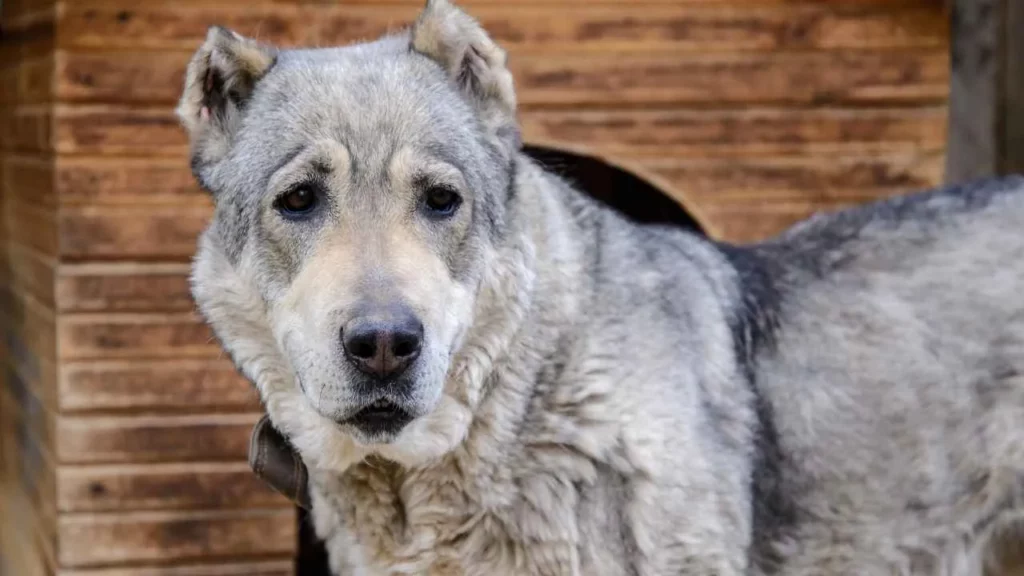
The Central Asian Shepherd Dog is a proud, independent, and courageous breed with high endurance and a natural territorial instinct. Known for their fearlessness towards large predators, they are excellent protectors but require constant supervision.
According to Betterpet, this breed, formed through natural selection over 4,000 years, spans regions from the Caspian Sea to China and Afghanistan, adapting to diverse terrains, including mountains and deserts.
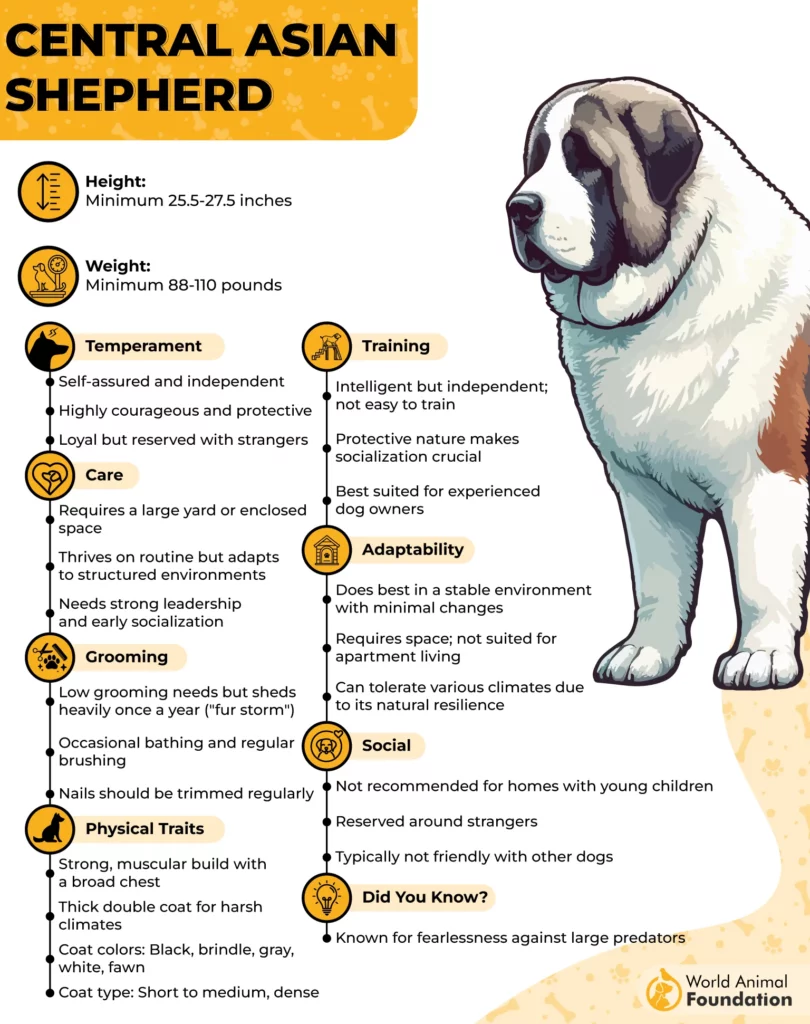
Considered one of the oldest dog breeds, dating back over 5,000 years, the Central Asian Shepherd was shaped by climate and culture rather than human interactions. They are not man-made and come in different types based on the geography they originated from, such as the mountains of Mongolia or the Karakum deserts.
These are strong-willed, protective, and self-sufficient dogs, making training challenging for novice dog owners. However, with the right training and routines, they can become well-behaved companions. Experienced owners can establish good habits, though early socialization and firm guidance are essential.
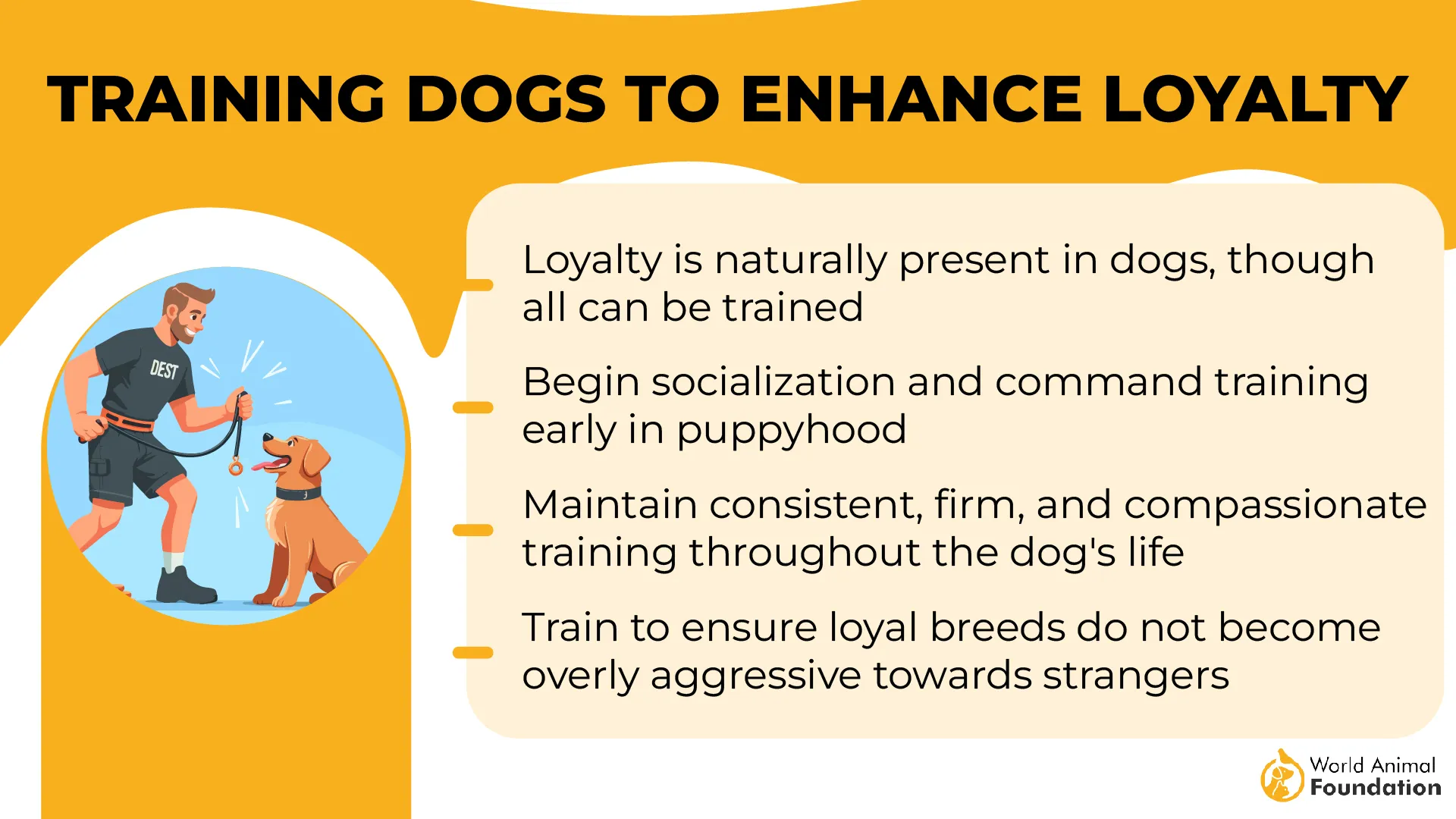
The Central Asian Shepherd Dog is affectionate with its family, including other pets, though it does not require constant attention. They enjoy alone time but are also content to cuddle with their owners. They excel at guarding their territory and dissuading intruders or predators.
While they are active outdoors, they tend to be quiet indoors. Their highly protective nature may make it difficult to introduce strangers into the home. Due to their size, independence, and strong guarding instincts, the Central Asian Shepherd Dog is best suited for experienced, dedicated dog owners.
4. Akita
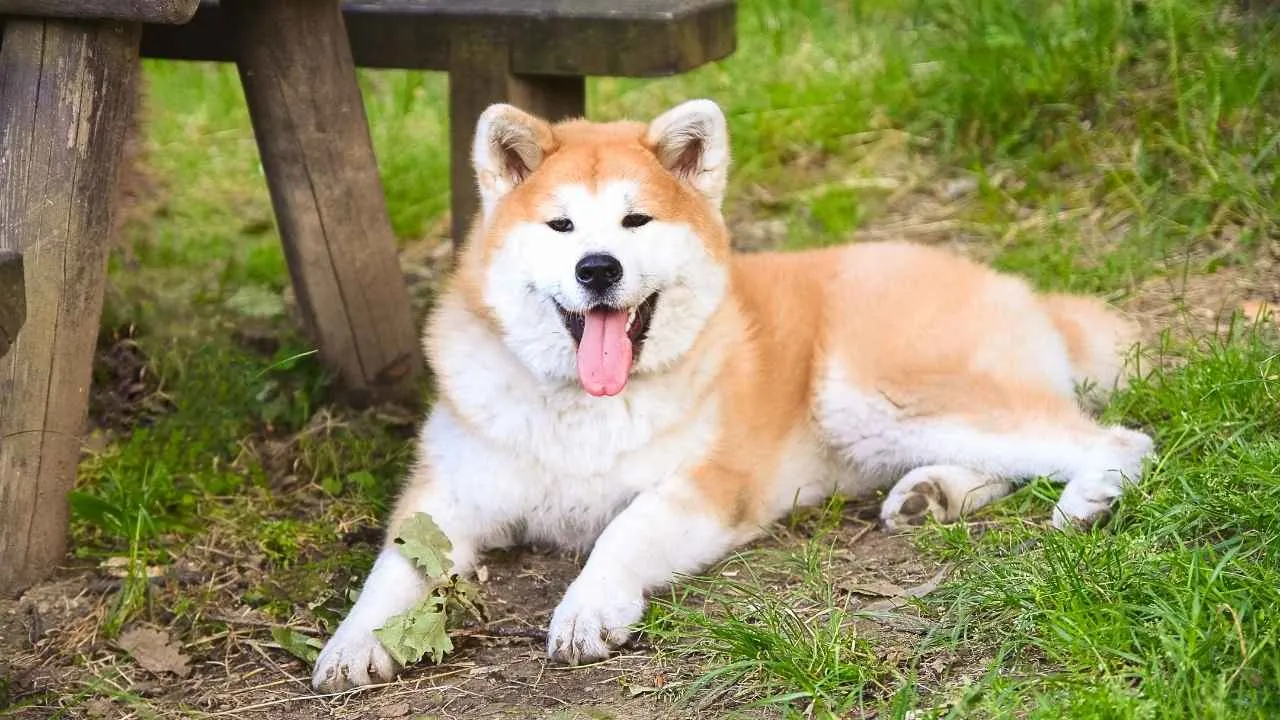
The Akita is a powerful and muscular breed that originated in the mountains of northern Japan, where it was used for hunting and guarding. The Japanese government recognized the breed as a “natural monument” in 1931. Akitas come in various colors, including all-white, brindle, and pinto, and are known for their broad heads, erect ears, and curled tails. They are revered for their strength, loyalty, and dignified demeanor.
Akitas were called “snow country dogs” and were bred in the snowy mountains of Japan for hunting boar, elk, and small bears. They have webbed toes, which help them navigate through snow, and retain their front dewclaws to assist with climbing out of icy waters. Akitas are energized by cooler weather, often staying outdoors for long periods when the conditions are right.
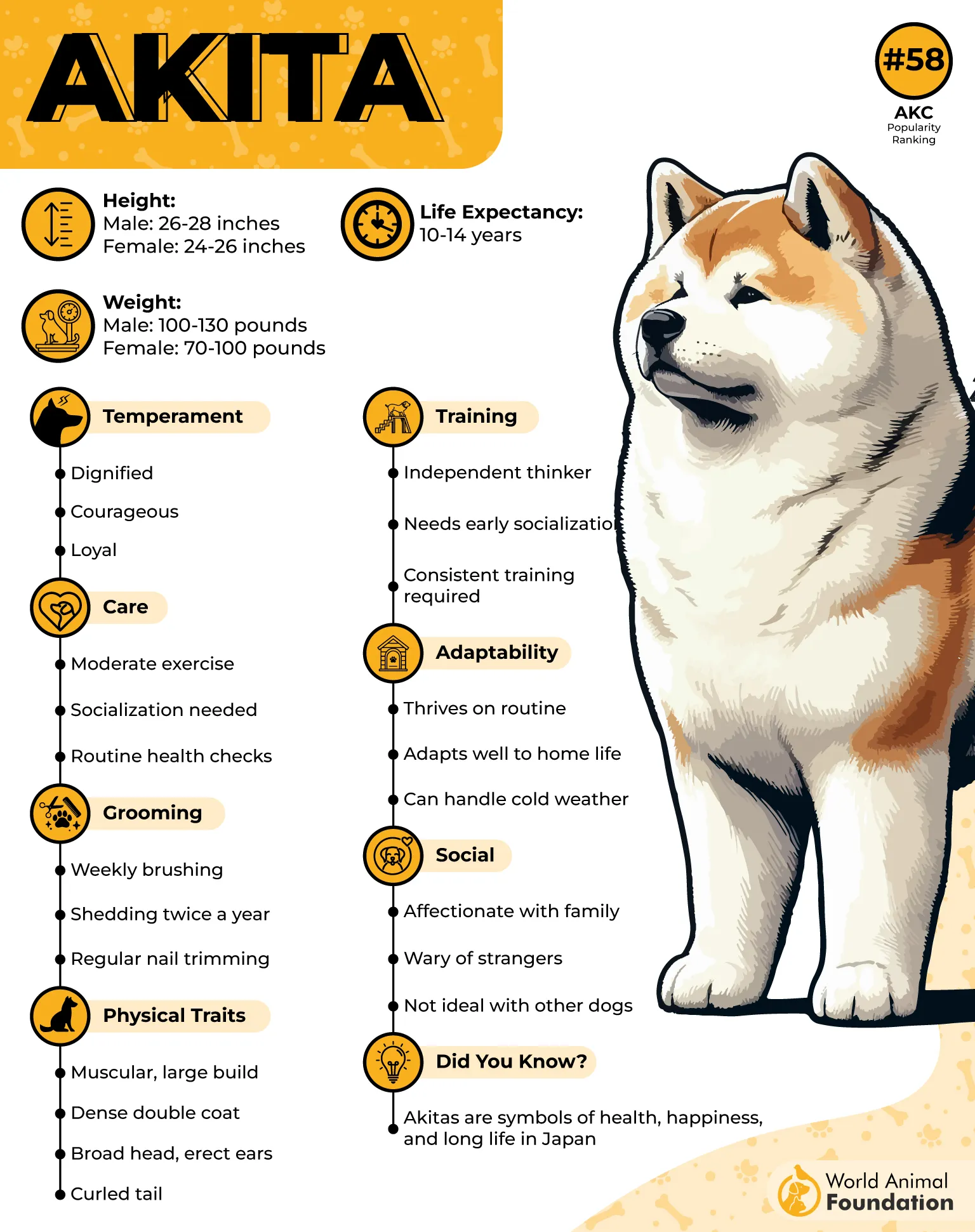
Akitas are known for their dignified, courageous, and loyal nature. In Japan, they were once considered a national treasure, with only the Imperial family and aristocracy allowed to own them. Over time, the breed became associated with the samurai, who viewed them as symbols of honor.
The breed’s spiritual significance continues, as Akita statues are often given to families to signify health, happiness, and longevity.
The Akita’s most famous story is that of Hachikō. This dog waited for his deceased owner at a train station every day for nearly 10 years, becoming a symbol of unwavering loyalty. This story helped the Akita gain international recognition, and the breed was introduced to the United States by Helen Keller in 1937.
As noted by the American Kennel Club, Akitas are known for their self-reliant nature and aloof demeanour, strong-willed around strangers, making early socialization essential. While they are affectionate with their families, they tend to be reserved with others, especially if they sense a threat.
They require experienced owners who can provide firm, positive training methods to help them become well-adjusted companions.
5. Basenji
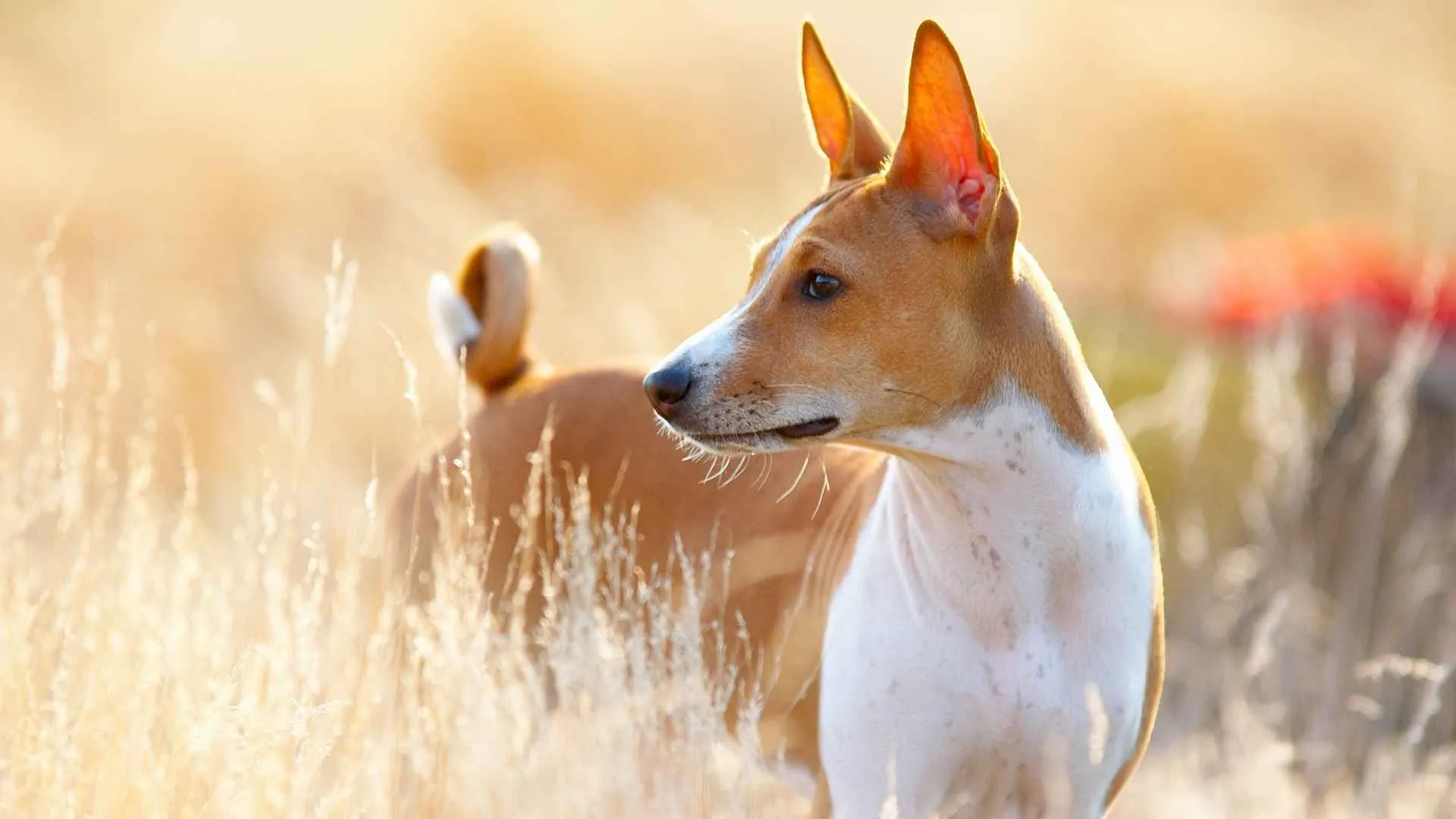
The Basenji is an ancient breed native to Central Africa, particularly the Congo, where indigenous tribes have historically kept it as a village dog. These dogs were originally bred for hunting small game, including gazelles, and were known for their strong sense of sight and smell.
They were used to chase prey into nets, aiding hunters in capturing animals. The Basenji’s quiet nature made it a valuable hunting companion, as it does not bark but instead makes a distinctive yodel-like sound called a “barroo.”
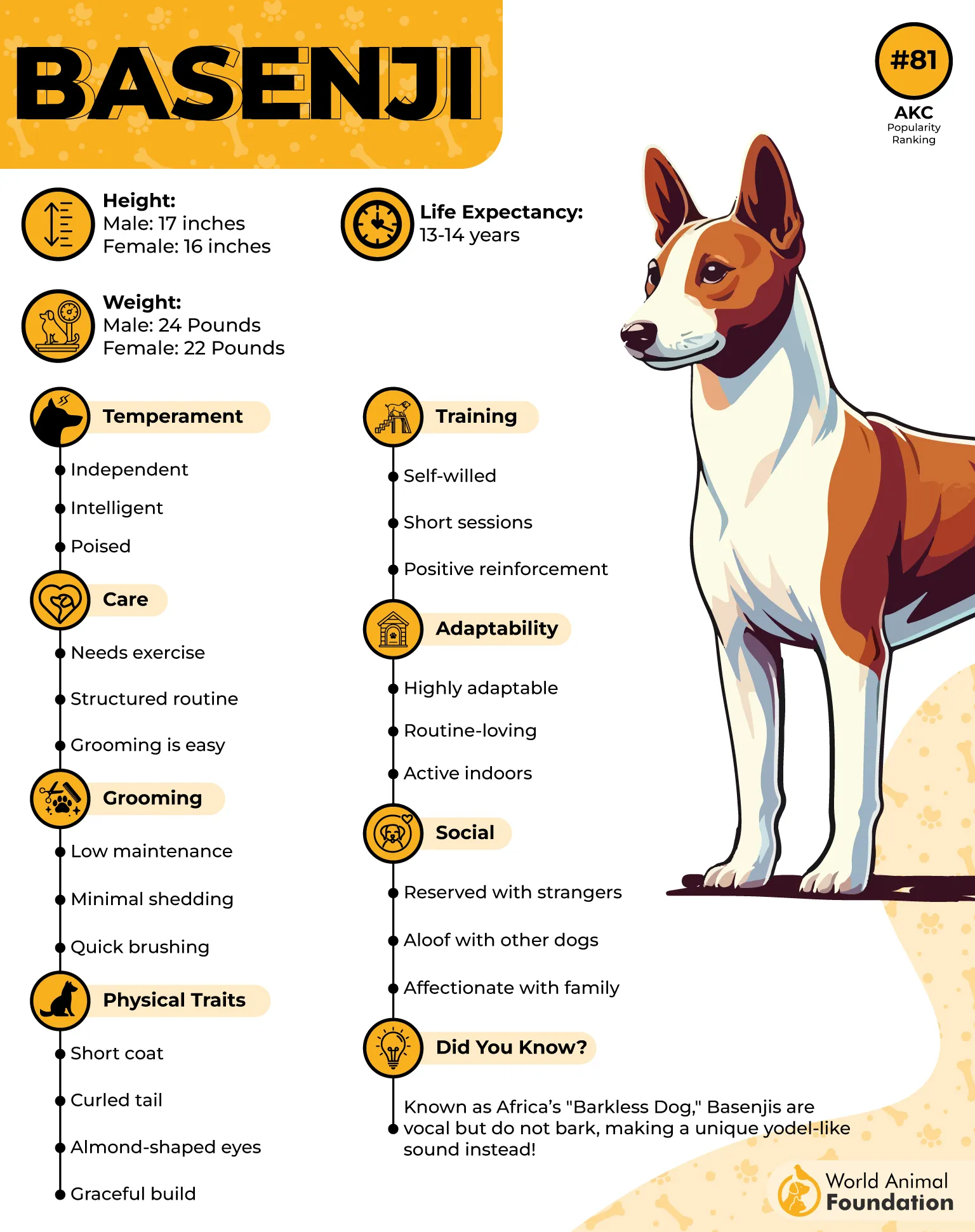
As one of the oldest known dog breeds, Basenjis have remained relatively unchanged for thousands of years. Evidence of their existence dates back to ancient African cave paintings and tombs in Egypt. The breed’s name, which translates to “jumping-up-and-down dog,” reflects its impressive jumping ability. Despite their ancient origins, Basenjis were not bred as pets in the Western world until the 1940s.
Basenjis are known for their independence and elegance, with a sleek, muscular build and a short coat available in various colors. They are medium-sized dogs, standing 16 to 17 inches at the shoulder and weighing 22 to 24 pounds. Due to their history as hunting dogs, they are highly intelligent, self-confident, and can be somewhat stubborn, requiring firm leadership and consistent training.
Britannica states this breed’s unique trait is its lack of barking. Instead of the traditional bark, Basenjis produce a variety of other sounds, including growls and their signature yodel.
This trait has led to their nickname, “the African Barkless Dog.” Their quiet demeanor is believed to have been an adaptation for hunting, allowing them to remain stealthy while tracking prey.
6. Great Pyrenees
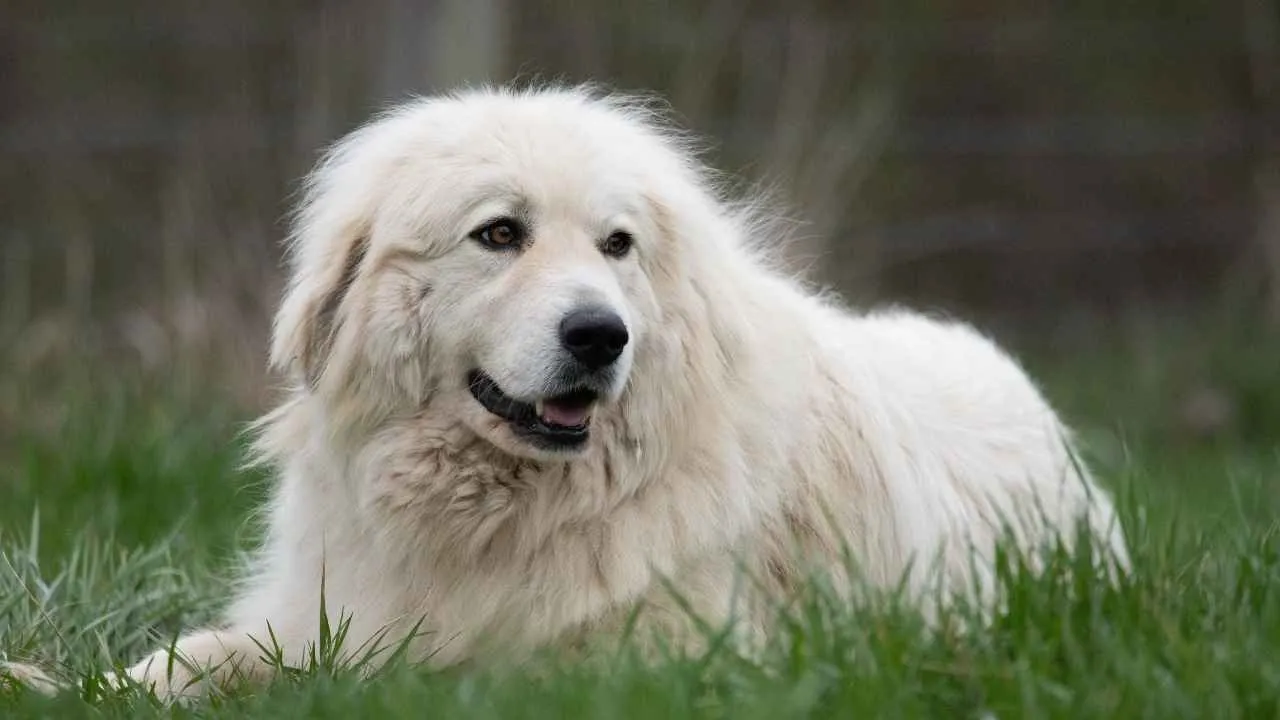
The Great Pyrenees is a majestic and powerful breed originally developed in the Pyrenees Mountains between France and Spain to guard livestock from predators like wolves and bears. Their dense, weather-resistant white coat provided excellent camouflage in the snowy terrain.
Despite their imposing stature, Great Pyrenees are known for their gentle and calm demeanor around their families. They form strong bonds with their people and can be affectionate and devoted companions.
Despite their strong protective instincts, they are not aggressive when properly socialized, making them suitable for family life with the right training and environment.
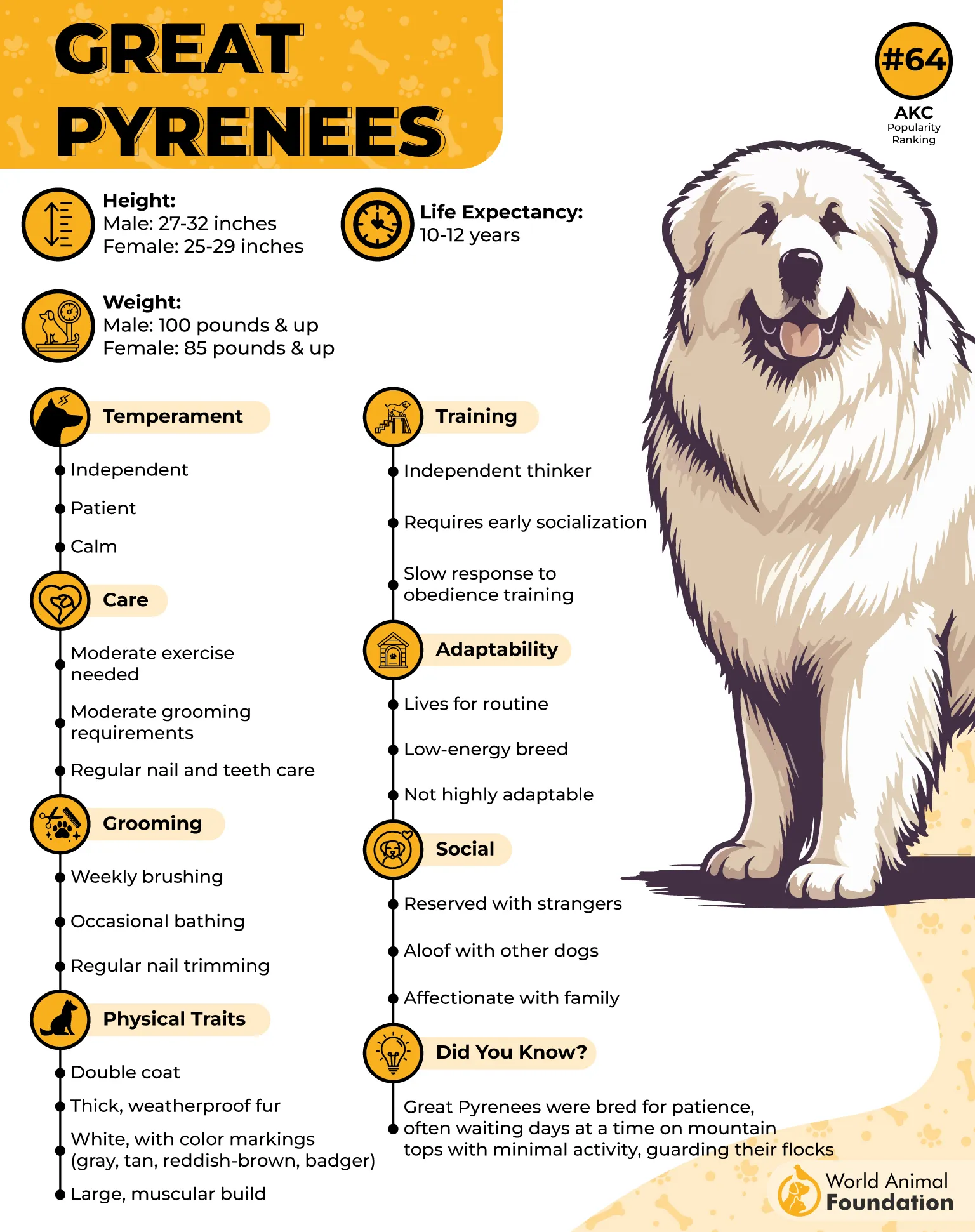
As noted by Purina, this breed is referred to by different names outside of the United States: Pyrenean Mountain Dog in the UK and Le Chien de Montagne des Pyrénées in France. Historically, they were paired with Pyrenean Shepherds, the smaller herding dogs, while the Great Pyrenees took on the role of protector.
The breed’s legacy extends beyond farm life. In World War II, they were employed to transport artillery supplies across the rugged Pyrenees terrain, showcasing their endurance and strength. This illustrates their versatility and working heritage, which goes far beyond the traditional pastoral setting.
Known for their independence, the Great Pyrenees are self-reliant thinkers due to centuries of working without human direction in remote mountain regions. While they may not respond with enthusiasm to strict obedience training, early socialization and patience, positive reinforcement can help them become well-mannered and trustworthy companions.
Historically admired by European royalty, the breed even found favor with Queen Victoria of England, further cementing its reputation as a noble and valued dog.
7. Tibetan Mastiff
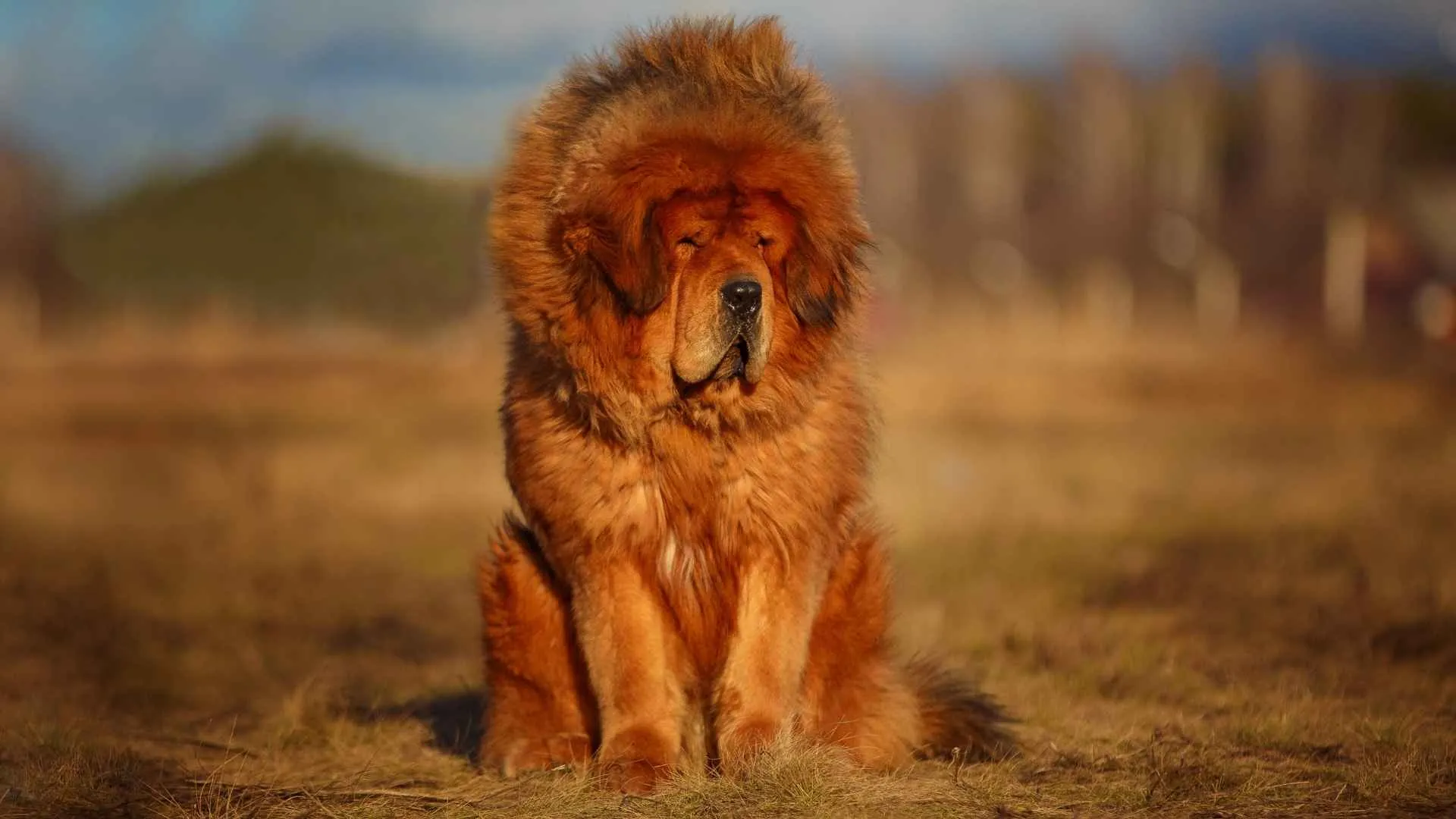
The Tibetan Mastiff is an ancient and majestic breed known for its lion-like mane, immense strength, and imposing presence. Originally domesticated thousands of years ago in the Himalayas, this breed was primarily used to guard large properties and monasteries.
These dogs are deeply loyal and highly protective, traits that make them excellent guard dogs. Their watchful and territorial instincts are best handled with early socialization, especially around strangers and other animals. Tibetan Mastiffs are also sensitive and emotionally attuned to their surroundings, often reacting protectively if they sense distress in their family members.
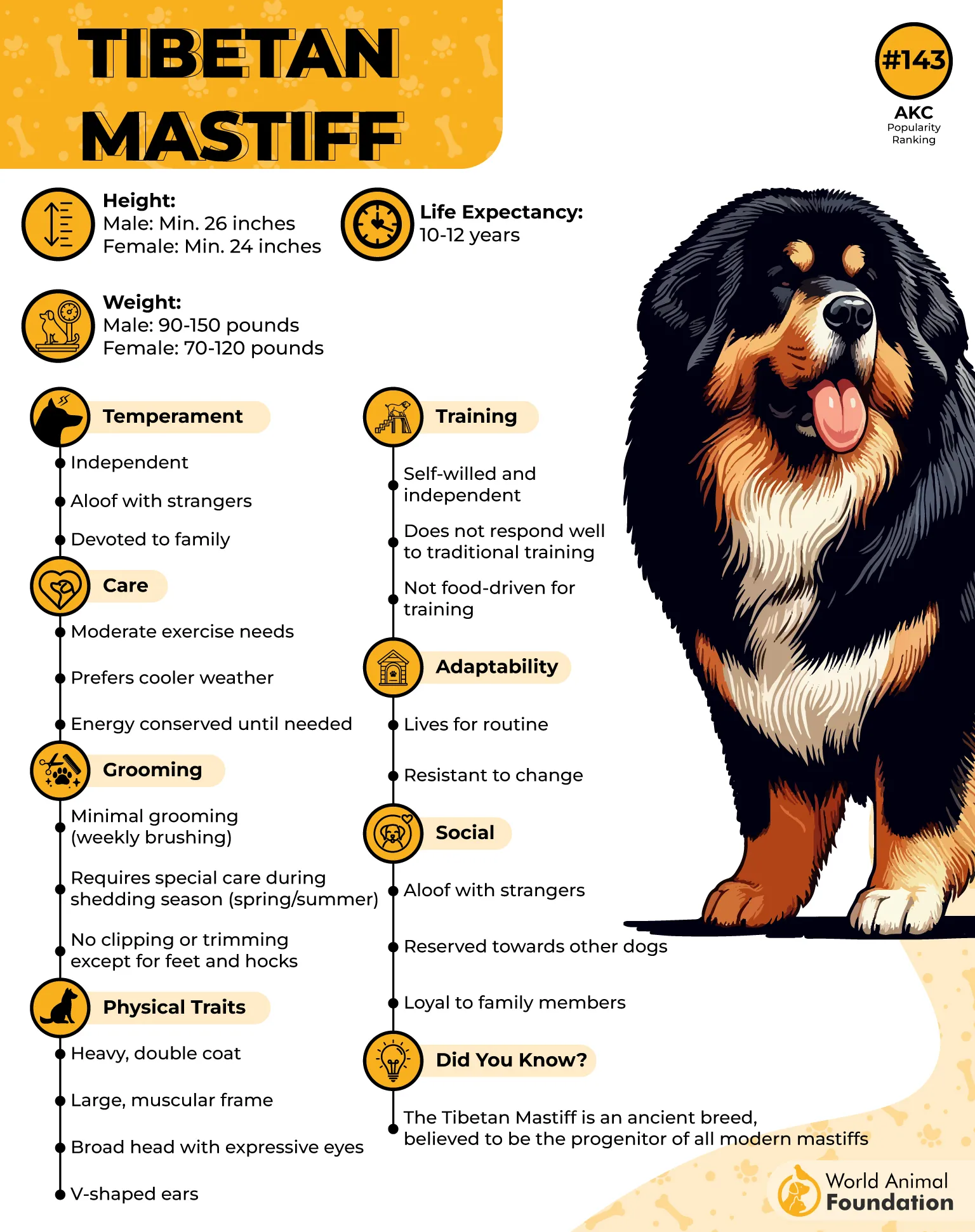
Tibetan Mastiffs have an independent streak and a strong-willed personality. This independence makes them less responsive to commands, especially in obedience or agility competitions. Training them requires a calm, consistent approach and is not recommended for first-time dog owners.
Despite their serious demeanor, Tibetan Mastiffs can be affectionate and playful, particularly with their family. They enjoy roaming the backyard and keeping a silent vigil, preferring to “patrol” rather than engage in typical dog games like fetch.
A securely fenced yard is essential, as they are skilled escape artists. Though independent, they are not emotionally distant and do best when given personal space and companionship in balance.
Tibetan Mastiffs are generally clean and quiet indoors, showing laid-back behavior when not outside. While not prone to excessive barking inside, they can be vocal outdoors if they sense potential threats. Their behavior is typically calm, but they retain a deep sense of duty and will act when necessary, often conserving energy for sudden bursts of action.
Culturally, Tibetan Mastiffs are revered in Tibet and have achieved high status in places like China, where they are seen as luxury dogs and symbols of power. Legends associate them with spiritual guardianship, even suggesting they hold the souls of monks and nuns unable to enter Shambhala, a mythical paradise.
8. Greyhound
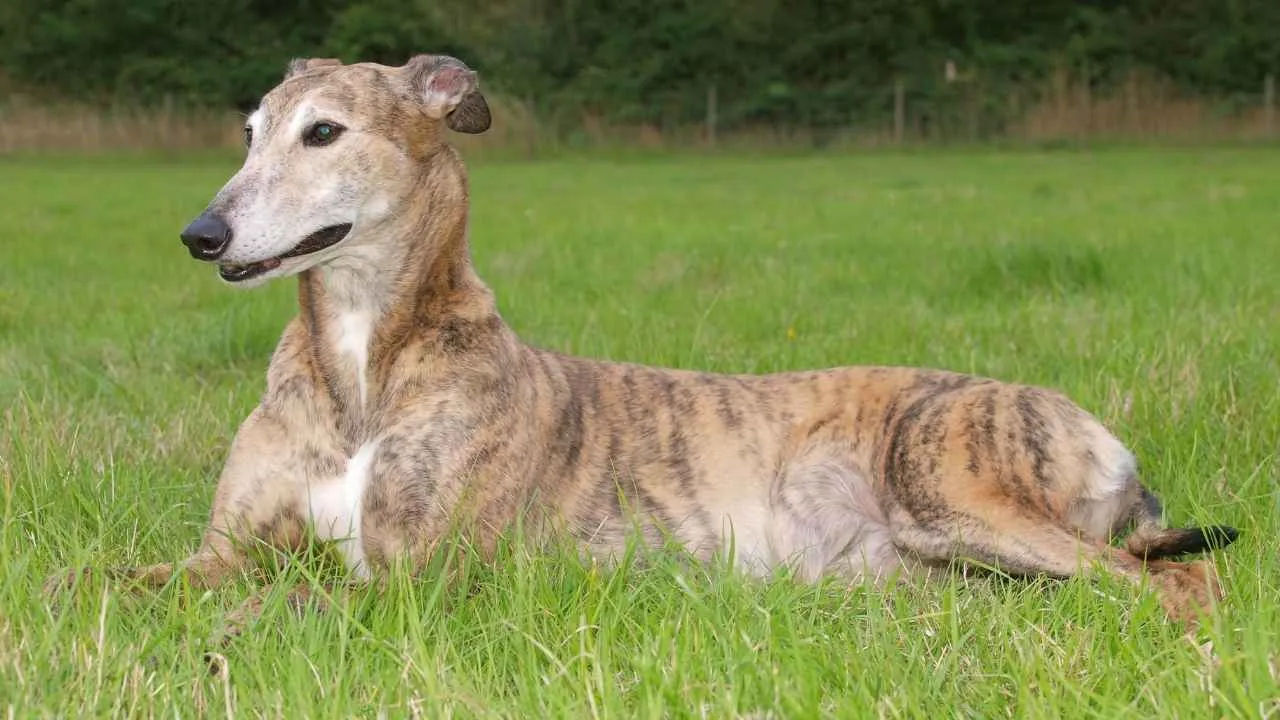
Greyhounds are gentle, non-aggressive dogs known for their calm and sensitive nature, making them ideal for quiet households. While they enjoy companionship, their independent streak means they’re comfortable spending time alone. Due to their naturally reserved demeanor, early socialization is essential to prevent shyness or timid behavior around unfamiliar people or settings.
Originally bred for coursing game over long distances, Greyhounds are the epitome of speed and agility. Their aerodynamic build, powerful muscles, and shock-absorbing footpads make them the fastest dog breed, capable of reaching incredible speeds.
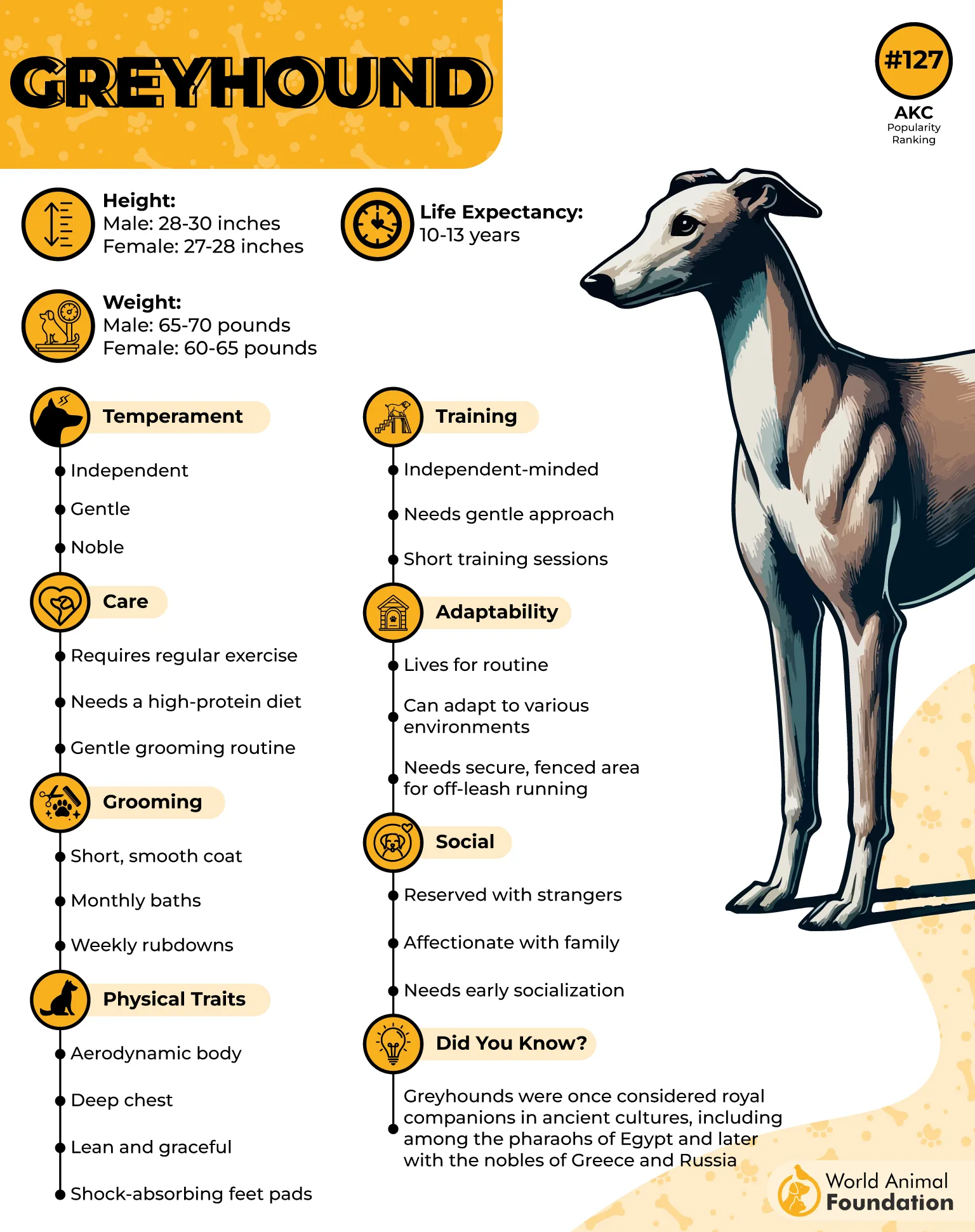
Despite their athleticism, Greyhounds are known as some of the laziest breeds in terms of daily habits. They thrive on short, energetic bursts of activity and are content to spend most of the day lounging. This low-maintenance exercise requirement makes them well-suited to smaller homes or apartments, provided they receive two active walks daily to prevent boredom and behavior issues.
Training Greyhounds is generally straightforward due to their intelligence and willingness to please, but their sensitive nature requires a gentle, positive reinforcement approach.
Because of their strong prey drive, Greyhounds are not ideal for homes with small pets, such as cats, which they may instinctively chase. It’s also important to keep them on a leash during walks unless in fully enclosed, animal-free spaces. Their sighthound instincts drive them to chase moving objects, often with little regard for recalling commands once in pursuit.
9. Shiba Inu
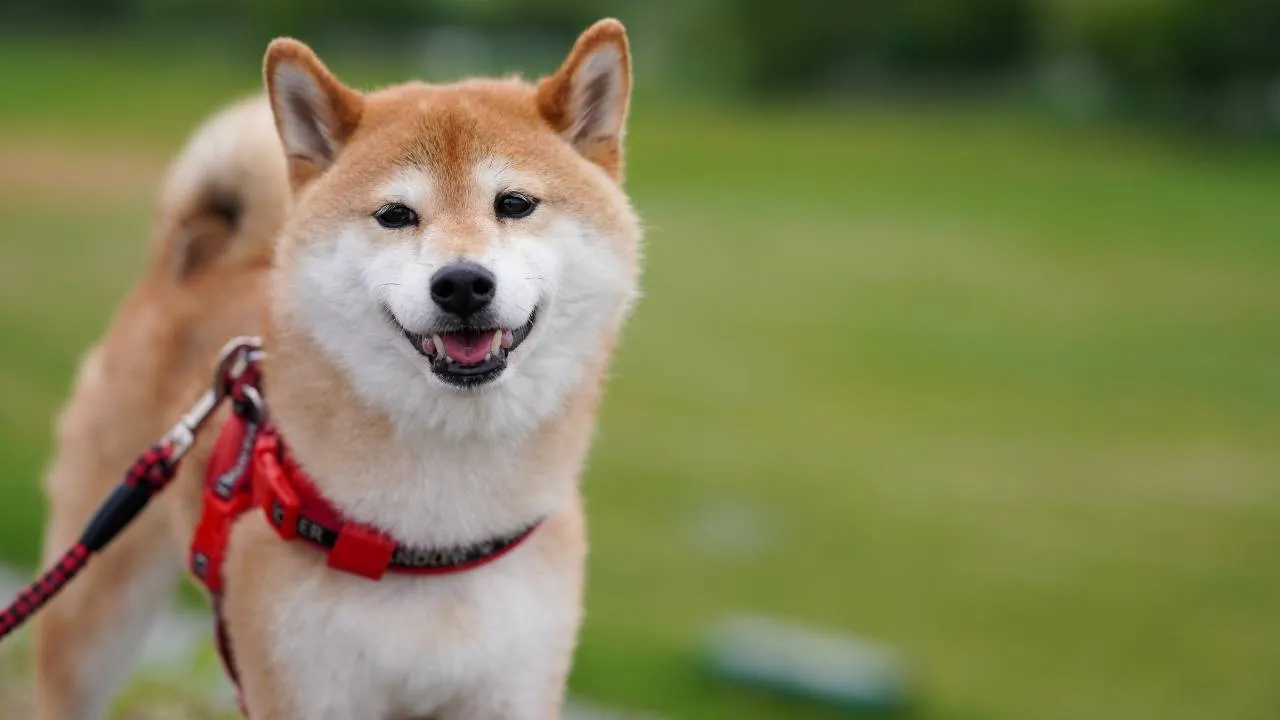
The Shiba Inu is a compact and muscular dog with ancient roots in Japan, originally bred for hunting in mountainous terrain. As the smallest native Japanese breed, it was prized for its agility, alertness, and sharp senses, making it an adept and independent hunter of small game in dense underbrush.
Today, it’s a beloved companion in Japan and beyond, admired for its distinctive foxlike appearance and confident personality.
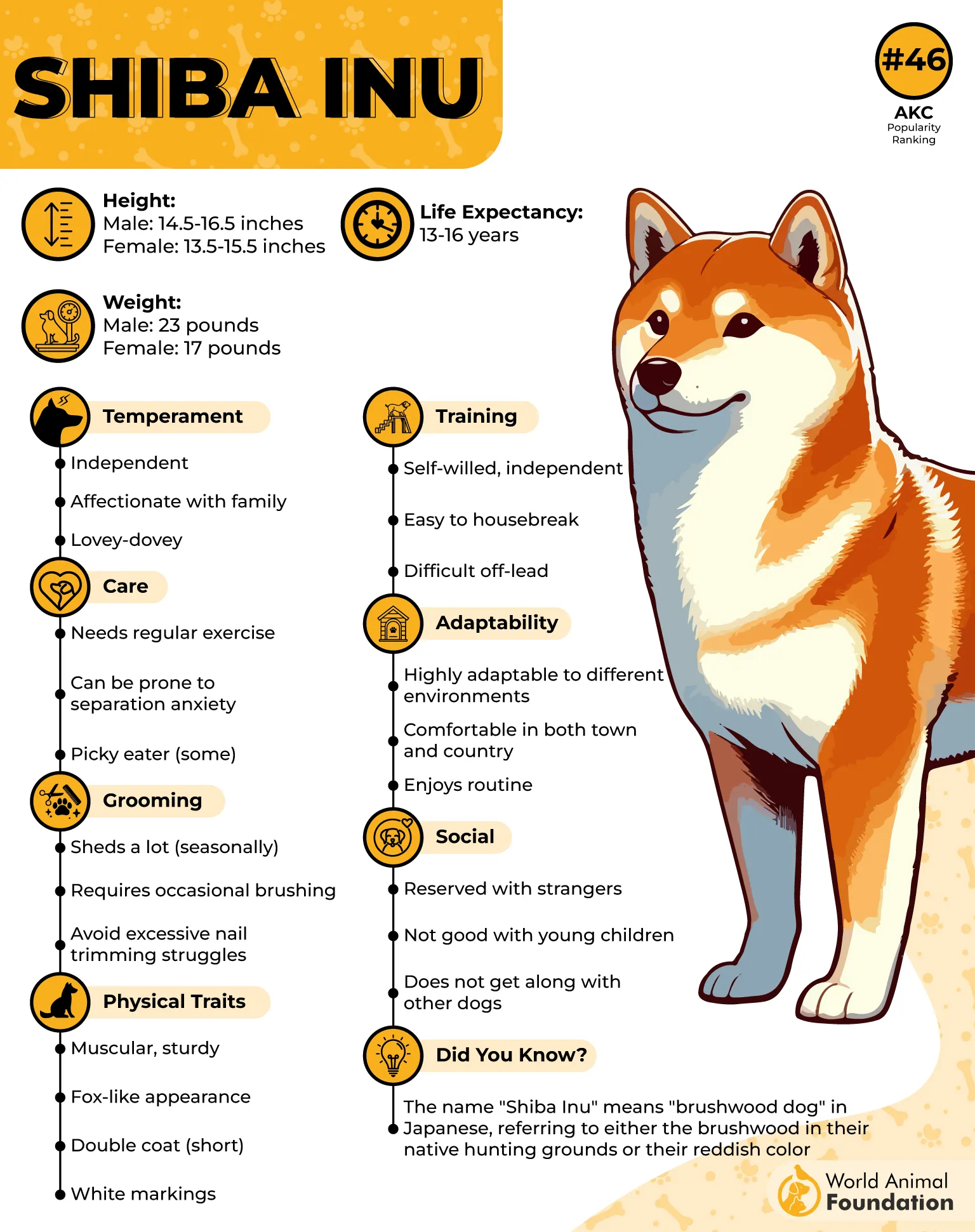
Shibas are strong-willed and independent dog breeds that exhibit a cat-like demeanor. They can be willful and refuse commands when not in the mood, making them a breed best suited for experienced and patient owners.
One of the biggest challenges with Shibas is their unreliability off-leash. Even the most obedient individuals may bolt if given the chance, driven by instinct and curiosity. Owners must be vigilant with gates, doors, and leash security.
While not known for excessive barking, Shibas are highly vocal in unique ways. They may yodel or “scream” when distressed or protesting grooming, nail trims, or leash training. This breed communicates clearly when it’s unhappy and requires gentle, respectful handling to avoid conflict.
Shibas are typically reserved but can be playful on their terms. When socialized from a young age, they usually get along well with children and pets, though their dominant nature may lead to friction with other assertive dogs.
The breed developed further through interbreeding with dogs introduced by later immigrants, eventually becoming a rugged, mountain-dwelling hunter. WebMD states that post-World War II efforts unified three regional Shiba types — Mino, Sanin, and Shinshu — to create the modern breed.
Though popularized in modern culture through memes and cryptocurrencies, Shiba Inu’s rich heritage and complex personality make it far more than an internet icon.
Conclusion
Independent nature dog breeds like the Afghan Hound, Basset Hound, and Scottish Terrier are known for their self-sufficient, self-assured nature. While they may not seek out constant interaction, their affectionate bond with human family members is strong and sincere. Breeds like the Lhasa Apso, Boston Terrier, and Bernese Mountain Dog value their own space and thrive when allowed to enjoy their own company.
Though less social with other dogs or strangers, these breeds aren’t aloof—they simply express loyalty with quiet confidence. With proper mental and physical stimulation, even gentle giants like Irish Wolfhounds or the Alaskan Malamute adapt well without becoming overly demanding. For those seeking the best dog with a unique personality and calm independence, these dogs offer a perfect balance of affection and autonomy.


